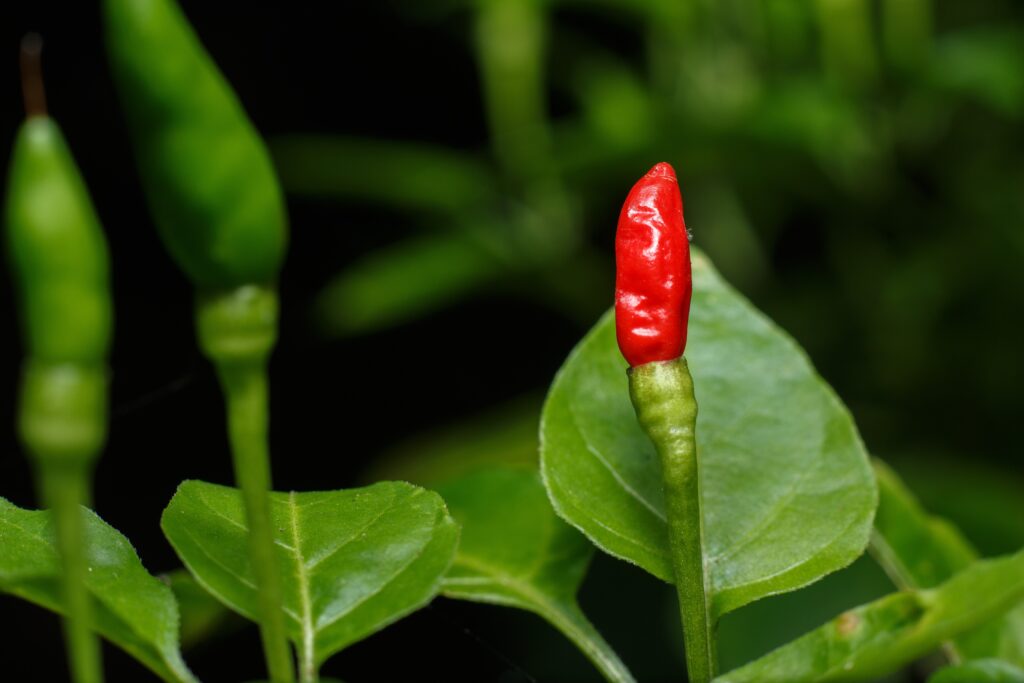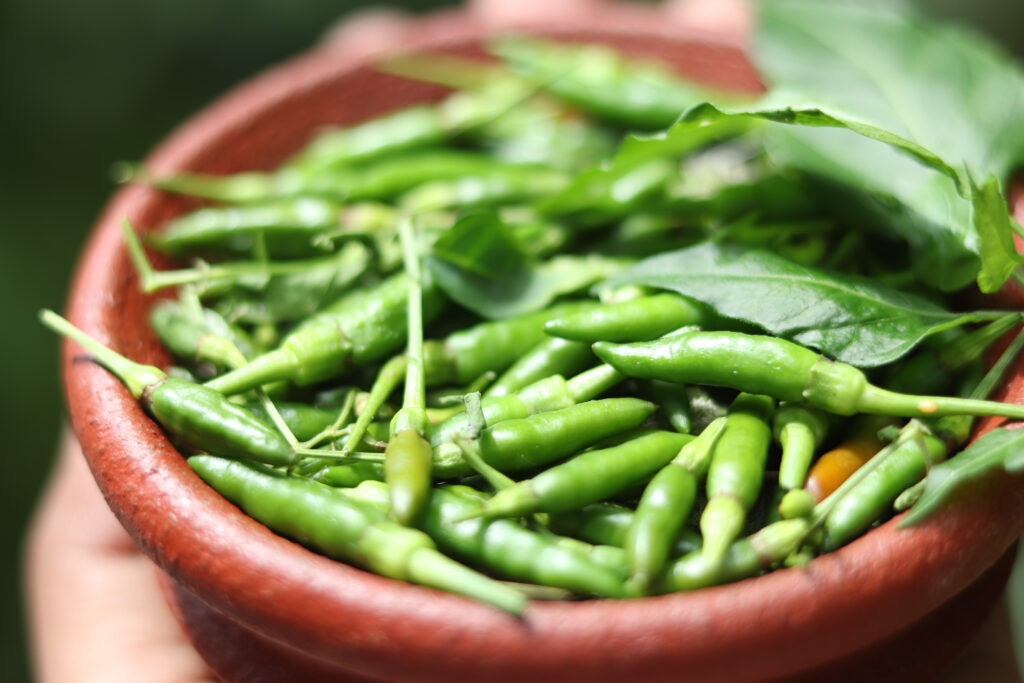Unpacking the Heat: African Bird’s Eye Chili Explained
African Bird’s Eye Chili: A Profile of Its Intense Heat
African Bird’s Eye Chili, known widely as Piri Piri, is a small but mighty chili pepper that is a cornerstone in Southern African cooking. Renowned for its intense heat, it rates between 50,000 and 175,000 on the Scoville scale. Beyond its fiery nature, Piri Piri offers a unique flavor profile with slightly fruity and tangy undertones, making it a favorite among chili enthusiasts. This chili’s powerful heat is used judiciously in cooking to add not just spiciness but also depth and complexity to dishes.
The Cultural and Culinary Importance of Piri Piri in Africa
Piri Piri has a rich cultural and culinary heritage in Africa, especially in Southern African countries like Mozambique and South Africa. Its use in local cuisines dates back centuries, with a history intertwined with trade and cultural exchanges. In Southern African cooking, Piri Piri is used in a variety of dishes, from marinades and sauces to traditional meat and vegetable preparations. Its popularity has also spread globally, making it an emblematic symbol of African culinary influence worldwide.

Piri Piri in Southern African Cooking
Incorporating Piri Piri in Traditional Southern African Dishes
In Southern African cuisine, Piri Piri is more than just a source of heat; it’s a key ingredient that brings life and character to traditional dishes. It’s commonly used in marinades for meats, particularly in Mozambique’s famous Piri Piri chicken, which is celebrated for its spicy, tangy flavor. In South Africa, Piri Piri adds a fiery kick to peri-peri sauce, a staple condiment for barbecues and grilled dishes. The chili’s versatility also extends to seafood, stews, and vegetable dishes, where it imparts a bold and vibrant taste that is distinctly African.
Piri Piri’s Role in Popular Southern African Recipes
Piri Piri plays a starring role in many iconic Southern African recipes. It’s used to create rich, spicy sauces that accompany a variety of dishes, from simple street food to elaborate main courses. In addition to the famous Piri Piri chicken, it’s also used in flavorful seafood dishes like prawns and fish, often grilled to perfection and served with a side of spicy Piri Piri sauce. The chili’s ability to add depth and excitement to food makes it a beloved ingredient in the Southern African culinary repertoire.

Tips and Techniques for Cooking with Piri Piri
How to Handle and Cook with African Bird’s Eye Chili Safely
When handling African Bird’s Eye Chili, it’s important to take precautions due to its intense heat. Always wear gloves when handling the chilis, and avoid touching your face or eyes. After handling, wash your hands thoroughly with soap. When cooking with Piri Piri, start with a small amount and adjust to taste, as its heat can be overwhelming. The chilis can be used whole, crushed, or as part of a spice blend, depending on the recipe and desired level of spiciness.
Balancing Flavors: Pairing Piri Piri with Other Ingredients
Piri Piri pairs well with a variety of ingredients that can help balance its heat. It works beautifully with citrus flavors, such as lemon and lime, which help to tame the chili’s intensity. Sweet ingredients like honey or brown sugar can also offset its spiciness. In cooking, Piri Piri is often balanced with creamy elements like coconut milk or yogurt, which help to mitigate the heat while adding richness to the dish. Experimenting with these combinations allows for a harmonious balance of flavors in Piri Piri-infused dishes.
Piri Piri Beyond Southern Africa: A Global Spice
African Bird’s Eye Chili in World Cuisines
African Bird’s Eye Chili, or Piri Piri, has transcended its African roots to become a beloved ingredient in cuisines around the world. In Portuguese cuisine, Piri Piri is used in a variety of dishes, most notably in the fiery Piri Piri chicken. It’s also found its way into Southeast Asian and Indian cooking, where it adds heat to curries, stir-fries, and sauces. The chili’s global popularity is a testament to its versatile flavor profile, which can enhance a wide range of dishes across different culinary traditions.
Contemporary Uses of Piri Piri in Modern Cooking Trends
As culinary trends evolve, Piri Piri continues to find new applications in modern cooking. Chefs around the world are incorporating it into fusion dishes, using its heat to add a unique twist to both traditional and innovative creations. From gourmet restaurants to street food, Piri Piri is being used in imaginative ways, such as in spicy marinades, flavorful rubs, and even in cocktail recipes. Its ability to add both heat and depth makes it a popular choice for chefs looking to create dishes with a bold, distinctive character.
Spicy Recipes: Bringing Piri Piri into Your Kitchen
Classic Southern African Recipes with a Piri Piri Twist
Embrace the fiery taste of Piri Piri in classic Southern African dishes. A Mozambican Piri Piri Chicken, marinated in a spicy Piri Piri sauce, brings a zesty and vibrant flavor to this traditional dish. For a seafood option, Piri Piri Prawns offer a spicy kick, perfect for a flavorful summertime meal. Incorporating Piri Piri into stews and vegetable dishes can also transform everyday recipes into exciting culinary experiences.
Modern Culinary Creations Featuring Piri Piri
Explore modern recipes that showcase the versatility of Piri Piri. A Piri Piri Spiced Veggie Burger provides a fiery twist to a vegetarian favorite, while a Piri Piri Infused Pasta introduces a spicy dimension to Italian cuisine. For those with a penchant for daring flavors, Piri Piri Spiced Popcorn can be an adventurous snack option. These contemporary recipes demonstrate how Piri Piri can add a burst of flavor to a wide range of dishes.
African Bird’s Eye Chili in Cooking: FAQs
1. How Hot is African Bird’s Eye Chili?
African Bird’s Eye Chili, or Piri Piri, is quite hot, rating between 50,000 and 175,000 on the Scoville scale. Its intense heat should be used judiciously to avoid overpowering dishes.
2. What Are the Best Dishes to Use Piri Piri In?
Piri Piri is best used in dishes that can handle its heat, such as grilled meats, stews, and spicy sauces. It also works well in seafood dishes, marinades, and to spice up vegetable preparations.
3. How Can I Incorporate Piri Piri into My Diet Safely?
To safely incorporate Piri Piri into your diet, start with very small amounts and gradually increase to suit your heat tolerance. It’s best used in dishes where its heat can be balanced with other flavors, such as creamy sauces or hearty stews.
4. Are There Health Benefits to Eating Piri Piri?
Piri Piri, like many chili peppers, contains capsaicin, which has been linked to various health benefits, including pain relief, reduced inflammation, and potential cardiovascular benefits. However, it should be consumed in moderation.
5. Can Piri Piri Be Grown at Home?
Yes, African Bird’s Eye Chili can be grown at home, provided you have a warm, sunny environment. These chilis require a good amount of sunlight and well-drained soil to thrive.
6. How Should Piri Piri Be Stored for Maximum Freshness?
Dried Piri Piri should be stored in an airtight container in a cool, dark place. Fresh Piri Piri chilis can be kept in the refrigerator, where they will retain their potency for a few weeks.
7. What Are Some Alternatives to Piri Piri for Those Who Prefer Less Heat?
For those who prefer less heat, alternatives to Piri Piri include milder chilis like jalapeños or paprika. These options provide a similar flavor profile without the intense heat of Piri Piri.
